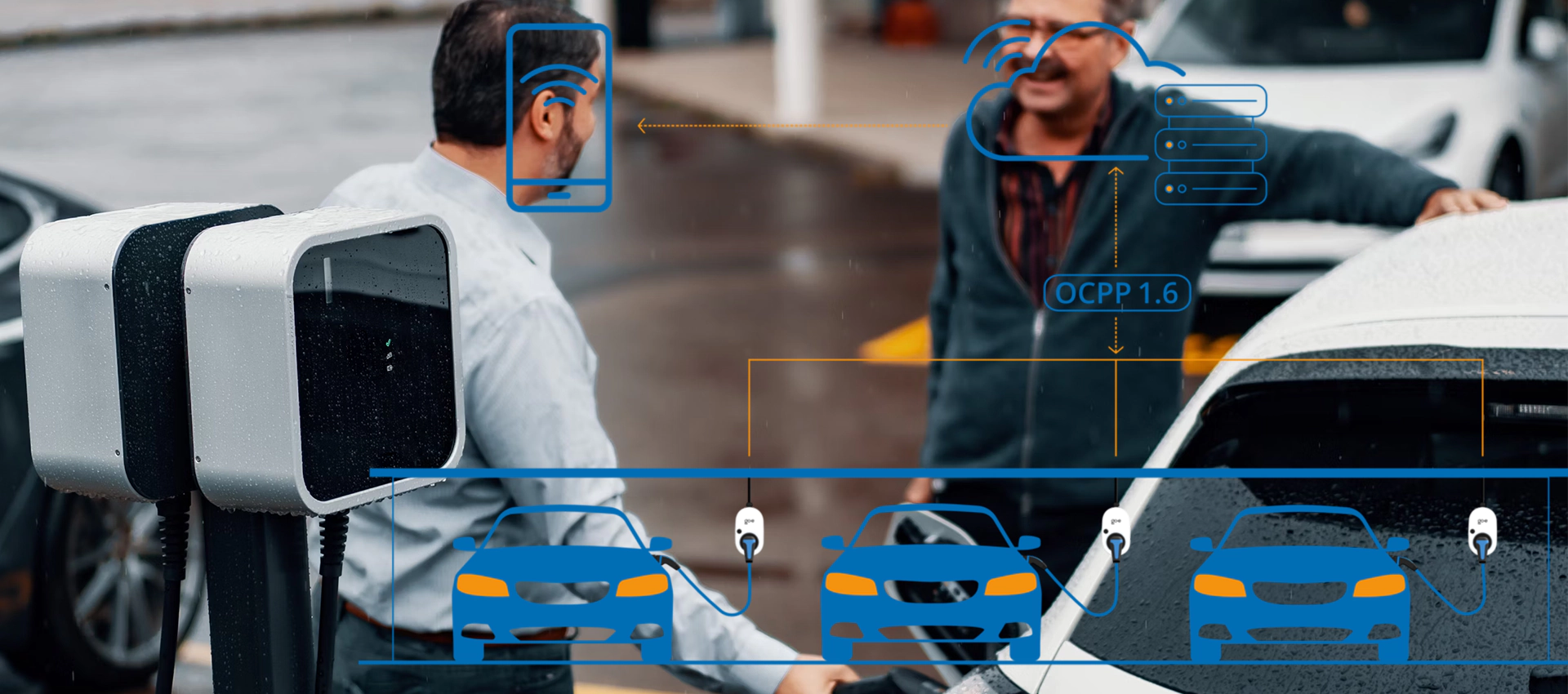
Power grid restricts EV chargers from going overseas
As electric vehicles (EVs) gain global popularity, the rapid expansion of EV charging infrastructure has placed unprecedented stress on power grids. In many countries, grid capacity limitations have emerged as a significant barrier to the deployment of charging stations. To address these challenges, many regions now require charging stations to support OCPP 1.6 (Open Charge Point Protocol) with smart charging capabilities. This protocol enables dynamic energy management, helping to alleviate grid stress while optimizing charging efficiency.

▶ The Role of OCPP 1.6 in Smart Charging
OCPP 1.6 is a globally recognized communication standard that facilitates seamless interaction between EV chargers and backend systems. Its support for smart charging is critical for mitigating grid constraints by enabling dynamic control over energy distribution.
▶ Key Features of OCPP 1.6 Smart Charging
- Load Management: Dynamically allocates power among multiple chargers based on real-time grid conditions, preventing local overloads.
- Charging Schedules: Allows operators to prioritize low-demand periods for charging, reducing peak load on the grid.
- Dynamic Adjustments: Responds to grid signals by modifying charging rates or temporarily pausing operations during high-demand periods.
These features ensure that charging infrastructure can adapt to fluctuating energy demands, minimizing disruptions and enhancing grid stability.
▶ Global Context: Why Smart Charging is Necessary
Grid limitations are a recurring issue in many countries due to the simultaneous rise in EV adoption and renewable energy integration. Examples include:
- The Netherlands: Grid congestion has led to restrictions on new renewable energy projects and high-power equipment installations.
- United Kingdom: Some regions face overloading issues, prompting measures like curtailing renewable energy output.
- Czech Republic: Localized grid constraints have resulted in strict limits on new energy connections.
In such scenarios, smart charging enabled by OCPP 1.6 provides a practical solution by balancing energy demand and supply efficiently.
▶ Advantages of OCPP 1.6 Smart Charging for Grid Management
- Peak Load Reduction
By shifting charging activities to off-peak hours, OCPP 1.6 reduces strain on the grid during high-demand periods. Operators can set “charging profiles” to cap power usage at specific times, ensuring compliance with grid capacity limits. - Optimized Resource Utilization
Traditional grid upgrades are expensive and time-consuming. Smart charging allows existing infrastructure to handle higher EV penetration without costly expansions. - Vehicle-to-Grid (V2G) Integration
OCPP 1.6 supports bidirectional energy flow, enabling EVs to return power to the grid during peak demand. This enhances grid flexibility and supports renewable energy integration. - Cost Efficiency
Dynamic power adjustments lower electricity costs for operators and users by leveraging time-of-use pricing and reducing equipment wear and tear.
▶ Implementation Recommendations
To overcome grid-related challenges in deploying EV chargers internationally, stakeholders should consider the following strategies:
- Adopt Policy Mandates: Governments should require new chargers to support OCPP protocols and smart charging functionalities.
- Leverage Demand Response Programs: Integrate chargers into virtual power plants or demand-side management systems for better coordination with the grid.
- Promote Renewable Energy Integration: Pair chargers with solar panels or battery storage systems to reduce dependence on the central grid.
- Encourage V2G Pilots: Foster innovation through pilot programs that explore advanced capabilities like bidirectional charging.
▶ Conclusion
The growing demand for EVs necessitates a robust and intelligent charging infrastructure capable of addressing power grid challenges. Supporting OCPP 1.6 smart charging is not only a technical necessity but also an economic and environmental imperative for sustainable growth in e-mobility. By adopting this protocol, countries can ensure efficient resource utilization, reduced operational costs, and enhanced grid resilience—paving the way for a greener future in transportation.